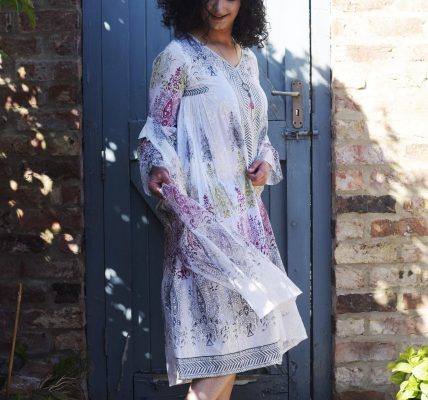Cecil Beaton Bright Young Things exhibition in Sheffield to offer reminder of original Roaring Twenties as lockdown eases
Cecil Beaton Bright Young Things exhibition in Sheffield to offer reminder of original Roaring Twenties as lockdown eases
An exhibition celebrating the work of acclaimed photographer Cecil Beaton opens in Sheffield this month. Daniel Dylan Wray reports.
Cecil Beaton’s influence is hard to avoid, says Robin Muir, curator of the photography exhibition Cecil Beaton’s .
“He was extraordinary. I mean this is a man who most people think of as a photographer, which is quite right, but he was also one of the great diarists of the 20th century and he won two Oscars for his design work in film.”
He was also a fashion commentator, changed the way the royal family looked in 1939 with his first photographs of Queen Elizabeth, and is, says Muir, “one of the greatest cultural figures of the British 20th century.”
The exhibition only lasted five days at the National Portrait Gallery in London before it had to close due to lockdown, but now it opens at Sheffield’s Millennium Gallery this month as the gallery begins to welcome visitors back.
“It’s a wonderful window into the fascinating world of the bright young things and a hugely creative period in Beaton’s work,” says Alison Morton, Head of Exhibitions at Museums Sheffield.
The work in question captures Beaton’s early period as a photographer, where he aligned himself with the outlandish, eccentric, decadent upper class elites that became known as the bright young things. The exhibition offers a portal into their fanciful, colourful and hedonistic worlds.
“It’s a great introduction to one of the greats,” says Muir. “Most exhibitions tend to be career-long retrospectives but because his is a very long career this is the first time that we’ve focused on when Cecil starts. It takes us from 1924, when he has his first picture in Vogue, to 1937 when he had this extraordinary fantastical party in Wiltshire. That sort of brings down the curtain on the era as the storm clouds are gathering in Europe, as the war is about to happen.”
Morton feels like the vibrant, celebratory nature of the photographs will go down well after what we’ve all been going through this past year.
“It’s going to be an uplifting show,” she says. “I think it’s going to celebrate sociability and how we like each other’s company and really like to party. We’re really conscious that people have had a year of emotional difficulty and economic difficulty. There’s been a lot of loss in the last year and it’s been really difficult for people. We’re aware of that but we’re feeling that actually there’s going to be some parallels in a way, between the 1920s when these photographs were taken, and what lies ahead.” Muir agrees.
“I wonder if once this whole thing is over whether we’re going to go into our own roaring 20s again,” he asks.
Beaton came from a comfortable middle class background but looked on in awe of the world he was photographing and sought to make himself a part of it.
“Cecil was always very anxious and nervous about where he came from,” Muir says.
“He was the son of a relatively prosperous and comfortable timber merchant but he wanted to be something more than that. He sees this extraordinary world out there where beautiful people are disporting themselves and he really wants to be a part of that. He manipulates his proximity towards the bright young things and that enables him to reinvent himself and to escape this resolutely humdrum existence, as he perceives it.”
There are plenty of names and stories that feature in the exhibition, such as the actors and anglophiles Tallulah Bankhead and Anna May Wong, writer Daphne du Maurier, glamorous socialites Edwina Mountbatten and Diana Guinness, plus composer William Walton and modernist poets Iris Tree and Nancy Cunard. Also featured are portraits of the older generation, like outspoken poet and critic Edith Sitwell, witty social figure Lady Diana Cooper, artist and Irish patriot Hazel Lavery, and the dazzling and bejewelled Lady Alexander, whose husband produced Oscar Wilde’s comedies and was one of Beaton’s early patrons.
The photographs are poised and glamorous but Muir suggests they are not intended to probe deep into the subjects. “It is not difficult photography,” he says. “For Beaton at this period, it’s not about stripping back the surface to penetrate the personality inside. It’s all about the surfaces. Surface is everything – artifice and surface. It’s about pretence, it’s about making worlds of make believe – camouflage, reinvention and disguise.”
Morton loves the charm present in this approach. “The pictures I love are the ones that are almost equally humorous and glamorous,” she says. “There’s that kind of DIY nature he brings into the composition of his photographs. Like The Silver Soap Suds. It shows three young women, all very glamorous in these soap suds but they aren’t soap suds at all. They improvised with balloons and sellotape.”
However, Muir believes that underneath the makeup, the frolicking and the partying, lays a deeper and weightier issue to consider. “I think for the male members of the bright young things there’s a sense of collective guilt,” he says.
“A sense of survivor’s guilt for still being alive. The war had wiped out almost an entire generation of older brothers, uncles, cousins, and those who remain behind as bright young things are always forever thinking they’ve been compared unfavourably against those that gave their lives. So they react with frivolity. That might to us seem disrespectful, but they deem it almost necessary.”
Despite the seemingly fickle pomp of the bright young things, there was huge effort that went into it, says Muir. “The charity pageants, masquerades, and fancy dress parties, everything is taken deadly seriously,” he says. “Weeks and weeks are spent making these extraordinary costumes for their friends and themselves to wear. A lot of effort is expended on something that we, with our 21st century eyes, might think as a sort of frivolity for one night.”
The story of Beaton isn’t all glamour and decadence however. For some he’s a prejudiced and controversial figure. “There is a downside to it all,” says Muir. “And not least to Cecil. One of the reasons we stop in 1937, and this is not something we ignore in the exhibition, is that in 1938 Cecil has this terrible moment where, for some reason that he never fully understands himself, he puts an anti-Semitic slur into a cartoon submitted to US Vogue.
“There’s absolutely no conceivable defence for this and Beaton is fired from Vogue in both London and New York. Conde Nast, who owns Vogue in America, had to pulp 130,000 copies of the magazine. It was a deeply stupid thing to do and it cost Beaton his reputation,” he says.
“He was barred from Hollywood where he just started to make a name as a photographer shooting the silver screen stars. It was the coming Second World War that saved him. When war comes, Cecil is able to align himself with the Ministry of Information to become a war photographer and the good work that he does during the war is able to redeem him in many people’s eyes.”
After the war, there was no such place for these kinds of antics and so the bright young things exist between two world wars. “The Second World War killed it,” Muir says. “Rationing in Britain goes on to the 1950s so there’s nothing much to celebrate.”
Which draws some parallels with today, with a sense of life slowly returning to normal.
Morton feels this is the ideal exhibition to kick-start a renewed feeling of hope and rejuvenation. “Whatever people might have lost in the last year, we’re hoping they’ll be some celebration,” she says. “Fundamentally the exhibition is a celebration of the joy, inspiration and delight we find in those people we meet and find a connection with, and as such, couldn’t be more timely.”
Cecil Beaton’s Bright Young Things will open at the Millennium Gallery in mid-May – details of the opening date are to be announced shortly, see museums-sheffield.org.uk for the latest information. Entry for the exhibition is free and visitors are encouraged to pre-book their visit via the website.










